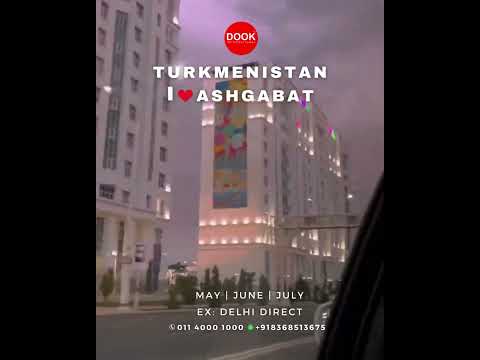
Nestled between the Karakum Desert and the Kopet Dag mountain range, Ashgabat is not just the capital city but also the beating heart of Turkmenistan. Known for its grandiose architecture, rich history, and vibrant culture, Ashgabat offers a unique glimpse into both the ancient heritage and ambitious modernization of this Central Asian nation.
**Historical Overview**
The area now known as Ashgabat has been inhabited for thousands of years, with archaeological evidence linking it to early civilizations that flourished in this region. Originally named ‘Askhabad’, derived from Persian elements meaning ‘the city of love’, it was historically a part of the Silk Road, serving as a vital trade link between East and West.
The modern city was founded in 1881, during the Russian Empire era. After suffering a devastating earthquake in 1948 where over two-thirds of its population perished, Ashgabat was meticulously rebuilt under Soviet guidance. Since Turkmenistan gained independence in 1991 following the dissolution of the Soviet Union, Ashgabat has been transformed into a showcase for national pride and progress under successive Turkmen governments.
**Architectural Marvels**
Today’s Ashgabat is renowned for its ambitious architectural projects featuring white marble buildings that have earned it a place in the Guinness Book of World Records for having the highest density of white marble-clad buildings in the world. These structures gleam under the desert sun, giving rise to its nickname “The White City.”
Significant buildings include the Independence Monument – a towering structure symbolizing Turkmen sovereignty – and the Turkmenbashi Ruhy Mosque which carries an eclectic mix of spiritual and nationalistic inscriptions. The Wedding Palace, another notable landmark, uniquely combines administrative functions with marital ones.
**Economic and Cultural Hub**
As Turkmenistan’s capital, Ashgabat is also an economic powerhouse. It hosts numerous international business conferences every year thanks to its upgraded infrastructure and facilities like the Ashgabat International Airport. Markets such as Tolkuchka offer everything from traditional carpets to livestock, mirroring traditional trading activities echoing through centuries.
Culturally, Ashgabat boasts museums like The National Museum of History displaying artifacts spanning Turkmenistan’s history from prehistoric times to present day. The Museum of Fine Arts houses impressive collections including rare Russian art pieces alongside traditional Turkmen crafts.
**A City Of Records**
Ashgabat’s pursuit for uniqueness doesn’t stop at architecture; it also holds records such as one for featuring the world’s largest indoor Ferris wheel located within Alem Cultural and Entertainment Center. This curiosity reflects not just on amusement but also showcases technological ambitions thriving within this desert capital.
**Challenges Amidst Splendor**
Despite its stunning urban landscape and cultural depth, Ashgabat faces challenges such as limited press freedom and heavy state control which often masks underlying social issues like economic disparities and restricted public discourse. Yet these complexities add layers to understanding this evolving city beyond its glossy exterior.
**Conclusion**
Ashgabat represents an intriguing blend of ambition, tradition, control, and innovation—a city where deeply ingrained cultural roots are juxtaposed with modern pretensions aimed at showcasing Turkmenistan’s potential on a global stage. For those keen on exploring cities that tell stories through their stones (or marbles), visiting Ashgabat promises an enlightening journey through time encapsulated within its white-marbled scape against rugged natural beauty surrounding it.
